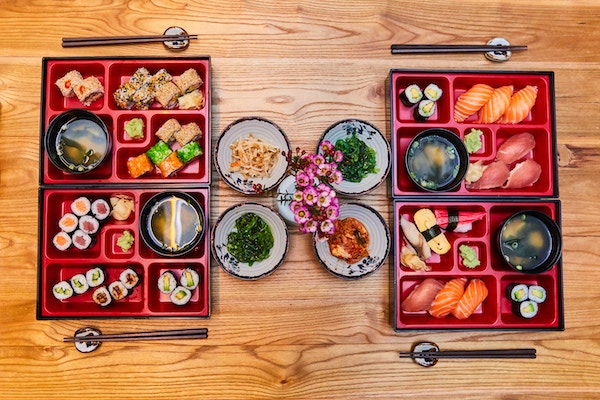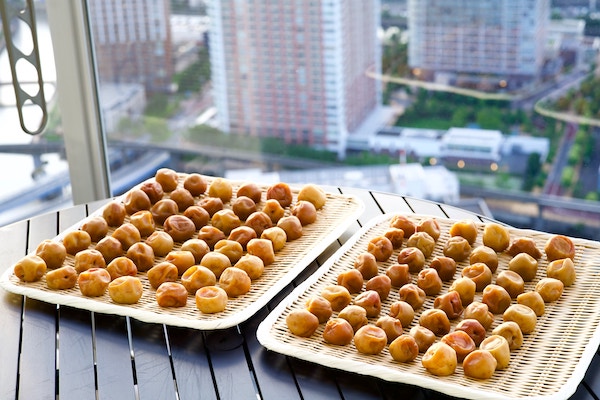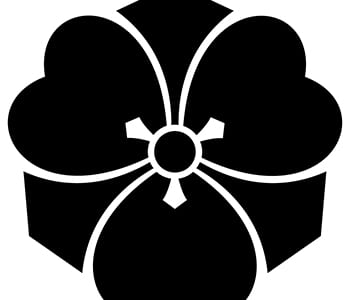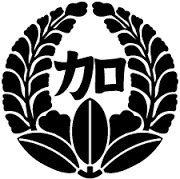
Bento is a tasty lunch box that every Japanese is familiar with. Everyone has his own favorite bento and memories with them. They use color and arrangement, and sometimes several tiers of bento boxes to enhance the entertainment value. The spirit of the Japanese bento is rooted in the consideration of making the food enjoyable and tasty for the people who eat it.
- What is a bento?
- Why is a bento box called a bento box?
- Why do Japanese use bento boxes?
- What is in a traditional Japanese bento?
- What are the rules for bento boxes?
1. What is a bento?
Since ancient times, there have been portable foods such as dried rice, which were indispensable for marching and traveling during the Warring States Period, but the word “bento” was coined during the Azuchi-Momoyama Period (1568-1600).
The privileged class item
Beautiful bento boxes called sageju were used for cherry blossom viewing and autumn leaf viewing. These portable containers were filled with a wide variety of beautiful foods, and can be considered the prototype for the bento boxes of today.
Originally, a bento box was inlaid with mother-of-pearl inlay or maki-e, and all tableware, such as chopsticks and sake cups, could be stored inside. Until the early modern period, bento boxes were a luxury item reserved for the upper classes, such as aristocrats and feudal lords.
Penetration to the general public in the Edo period
In the Edo period (1603-1867), the bento culture spread to the general public, and by the 1800s, the development of cookbooks and cook shops led to a variety of culinary offerings. In addition to work, people often went out for pleasure, such as cherry blossom viewing, boating, and paying homage to shrines and temples, and the bento culture flourished.
A bento is not merely a portable meal, but a device for appreciating nature and its changes with the seasons. It is a work of art, filled with ingredients to be enjoyed in a limited space with a sense of the seasons.
2. Why is a bento box called a bento box?
The word “bento” was given the meaning of “弁当” to indicate that the food should be prepared for use. During the Warring States period, bento was a simple meal that soldiers carried with them on their marches or distributed to laborers working to build castles.
Some says Oda Nobunaga, who fed a large number of people gathered at the time of his castle construction, named it “bento” to mean a simple meal to be distributed to each one of them.
3. Why do Japanese use bento boxes?

First of all, it is very convenient for having lunch with. You can prepare it yourself or you can grab one at a convenience store or other stores easily. If you are an office worker, you can eat it at your desk or enjoy it at a park, too.
Many people enjoy lunch as their highlight of the day. Having a beautiful and nutritious bento box can boost your afternoon.
Japanese seek to maximize the deliciousness of the ingredients and to make it visually pleasing to the eye. A bento box is a perfect item for enjoying meals outside the home.
4. What is in a traditional Japanese bento?
Basically, the bento is half rice and half side dish. The bento box itself is also decorative and pleasing to the senses. Specifically, rice is combined with seasonal fish, salmon, or vegetable side dishes.
What’s the yellow thing in a bento?
Pickled radish called “takuan”. Very traditional one that you can have as side dish. Crunchy texture and sound give a refreshing change while you enjoy a bento.
What’s the red ball in a bento?

Pickled plum called “umeboshi”. This is another very traditional component, which has antibacterial action. Often you find umeboshi in a rice ball as well.
5. What are the rules for bento boxes?
A bento should be tasteful and look nice. It is also important that the food in the bento box as a whole is nutritionally balanced. Seasoning is often simple, with good quality salt, soy sauce, sake, mirin, etc.
There is a reason why beauty is so important. The reason is to avoid mixing dishes with different flavors. Because bento boxes contain dishes that are cooked and seasoned according to the ingredients, if the flavors are mixed up, the original deliciousness cannot be enjoyed.
It is like a box garden where contains everything. You enjoy the scenery and balanced nutrition all at the same time. Hospitality and entertainment are expressed in a small box.
You can prepare it with traditional Japanese dishes or any cuisine you like. It will make your lunch time so much fun!
If you happen to be in Japan, check out these famous bento restaurants!
Hotto Motto (Japanese only)
Hokka Hokka-tei (Japanese only)
Origin Bento (comes in English)







Add comment